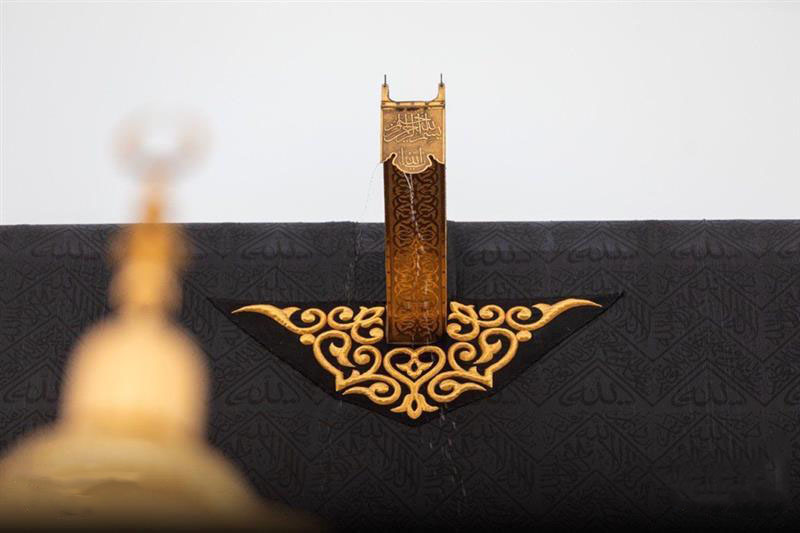The Mizab of the Ka’bah

The Mizab of the Ka’bah is the rain gutter attached to the roof of the Ka’bah on its northern side, extending towards the Hijr, and it serves to drain the water that collects on the surface of the Ka’bah during rainfall or when cleaning the roof.
The first Mizab was installed by Quraysh during their construction of the Ka’bah, as mentioned by Ibn Hisham narrating from Ibn Ishaq. Quraysh initially made the height of the Ka’bah 18 cubits. Later, ‘Abdullah ibn Zubair (may Allah be pleased with him) added 9 more cubits when he rebuilt it, and he placed a Mizab that drained into the Hijr.
Over time, the Mizab (rain gutter) of the Ka’bah underwent numerous modifications and changes. Abdullah ibnu Zubair (may Allah be pleased with him) added a new Mizab (rain gutter), and later, during the rule of Hajjaj ibnu Yusuf, further adjustments were made according to the original pillars and structure of Prophet Ibrahim (may Allah’s salam be upon him). Eventually, during the reign of Walid bin Abdul Malik, gold was added to the Mizab (rain gutter).
The renovations of the Mizab continued through different eras, with the last major renovation occurring during the era of King Fahd ibnu ‘Abdil-‘Aziz al Saud (may Allah have mercy upon him), it was replaced with the current Mizab (rain gutter).
The current Mizab (rain gutter) of the Ka’bah is made of pure gold, lined with thick pure silver. In between the gold and silver, thick wood is placed on the sides and beneath the Mizab (rain gutter), all of that is secured with gold nails. The Mizab (rain gutter) is rectangular in shape and features a hanging piece made of pure gold, known as the “tongue” or “burq‘a.” There are also engravements on both sides of the Mizab (rain gutter) and on the tongue, in beautiful Thuluth calligraphy style writing, which stands as a witness for its manufacturing and renovation history.
The Mizab (rain gutter) is a symbol of the prestigious care given to the Ka’bah, it has been maintained and renovated with great care and attention. This is so it remains as a testimony for the hard work of the Muslims in preserving the sanctity of the Ka’bah and its high status throughout time.